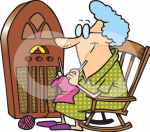Re-enactment
of the First Transmissions
During 2010 the Wireless Institute of Australia (WIA) celebrated the 100th anniversary of the foundation of the WIA,
and the very start of organised amateur radio in Australia during 1910.
As a part of that celebration, in the spirit
of celebrating early radio in Australia, on June 16 to 18, 201,0 the Gippsland Gate Radio and Electronics Club Inc. (GGREC)
re-enacted the historically important reception of the very first direct press message sent from the UK to Australia, which
was received at 5am on the December 5 1921 by a Mr. T. W. Bearup at the Koo Wee Rup station.
With the highly appreciated cooperation of
the Dragon Radio Club in Wales, using the special event call sign GB2VK, the re-enacted message was transmitted from the original
Marconi MUU station buildings at the original Waunfawr location in Caernarfon, Wales, UK, to the original location at Koo
Wee Rup.
This first message in 1921 and the many that
followed it over the next six months proved that direct radio communication between the UK and Australia could be reliable
and therefore commercially viable.
The reception of this message, and the hundreds of messages that followed it over the next two years, also led to the
crucial discovery of long path transmissions, and then the effect of ionospheric propagation that varied between day and night.
These fundamental principles that were discovered in Koo Wee Rup are still used by radio amateurs and professional broadcasters
to this day to predict the best signal paths for radio transmissions around the planet.
The GGREC used the special event call sign VK100WIA for the duration of the re-enactment to properly align the activity as
part of the WIA celebrations.
Contacts and QSL were made by the station
at Koo Wee Rup to all callers, with a concentration on UK stations. The station listened and called on several HF bands, and
145.45 MHz FM, and coordinating activities were through the 70 cm repeater VK3RLP using IRLP Node 6794.
GGREC partnered with the local Koo Wee Rup
Swamp Historical Society, the local Council, the Regional Library Service, and the Community in general, in the even
A commemorative plaque was erected near the
original receiving site to mark the site and the commemorative event. The plaque was officially unveiled in a ceremony at
the KWRHS rooms on June 18 2010.
The Plaque is adjacent to the KWRHS Museum at 325 Rossiter Rd, which is open on Sundays
Visit to the Station
The author visited the original site in Denham’s Rd on April 13, 2012 - no trace remains
of the original infrastructure – the land is now being developed for residential purposes.

